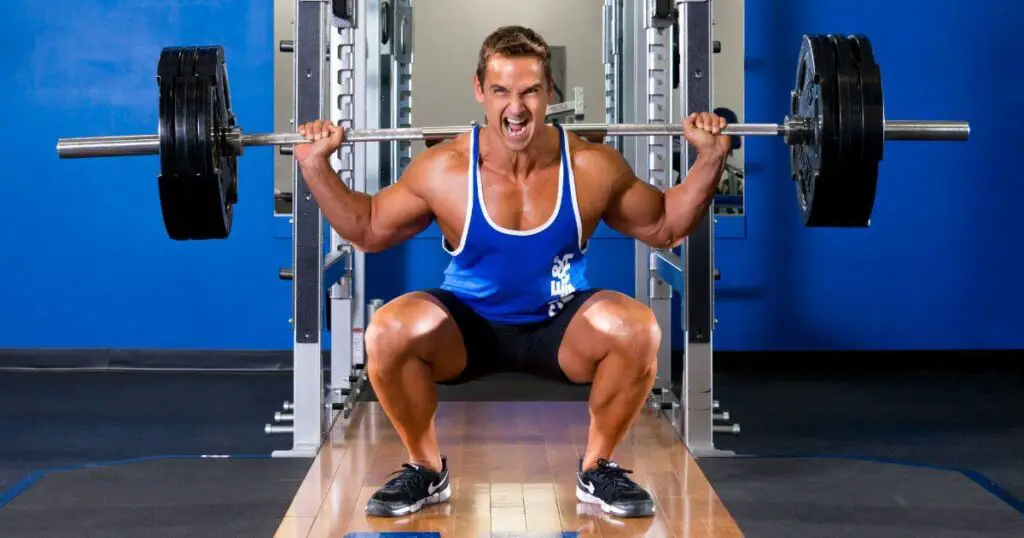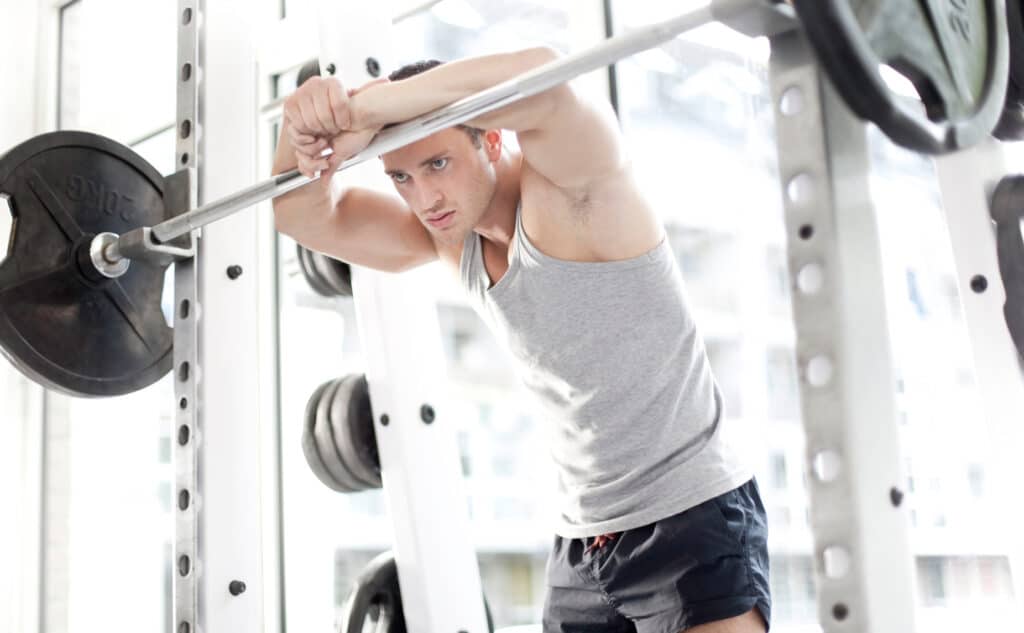Introduction
Can You Train Strength And Hypertrophy At The Same Time: In the realm of fitness and bodybuilding, two primary goals often emerge as the driving forces behind rigorous training routines: gaining strength and building muscle mass, commonly referred to as strength hypertrophy. Traditionally, these objectives have been approached as separate endeavors, each requiring distinct training methodologies. Strength training focuses on enhancing the body’s ability to exert force against resistance, often involving lower repetitions and higher weights. On the other hand, hypertrophy training centers on stimulating muscle growth through higher repetitions and moderate weights. However, a question that has garnered significant attention from athletes, trainers, and researchers alike is whether it is possible to simultaneously pursue both strength gains and hypertrophy within the same training regimen. Historically, conventional wisdom suggested that these two goals were in direct conflict, as they seemed to demand disparate adaptations from the body.
Strength gains were linked to neurological improvements, such as increased motor unit recruitment and improved neural efficiency, while hypertrophy was associated with the actual enlargement of muscle fibers through mechanisms like protein synthesis and cellular swelling. Thus, many individuals would alternate between phases of strength-focused and hypertrophy-focused training in pursuit of balanced progress. Yet, recent advancements in exercise science, coupled with evolving training methodologies, have challenged the notion of this strict dichotomy. A growing body of research and empirical evidence suggests that under the right conditions, it might be possible to achieve both increased strength and enhanced muscle size concurrently. This paradigm shift has led to the development of hybrid training protocols that blend elements of strength and hypertrophy training.
This exploration into the simultaneous training of strength and hypertrophy holds significant implications for athletes, bodybuilders, and fitness enthusiasts aiming to optimize their training regimens. By understanding the underlying physiological mechanisms that govern these adaptations and harnessing the insights gained from emerging research, individuals can potentially refine their training approaches to achieve a more well-rounded and efficient form of physical development. As we delve deeper into the intricacies of concurrent training, it becomes essential to dissect the mechanisms at play, examine the scientific evidence supporting this concept, and discern the practical applications that can guide those seeking to pursue both strength and hypertrophy in unison.

Should I separate strength and hypertrophy?
If you’re a beginner, you should always do hypertrophy training first. By starting with hypertrophy early in your strength training career, you’ll be building both muscle and strength. Take your time to develop muscle mass, learn the proper technique, and gain some confidence.
Traditionally, athletes and bodybuilders followed distinct training cycles, focusing on either strength or hypertrophy. The rationale behind this separation stemmed from the belief that specific adaptations were necessary for each goal. Strength training, characterized by lower repetitions and heavier weights, was thought to primarily target neurological adaptations, enhancing the efficiency of muscle fiber recruitment and coordination. In contrast, hypertrophy training, often involving higher repetitions and moderate weights, aimed to induce muscle growth by subjecting muscle fibers to metabolic stress and mechanical tension.
Recent research and evolving training methodologies challenge the notion of strict separation between strength and hypertrophy training. Increasingly, athletes and experts are exploring the concept of concurrent training, where both objectives are pursued in the same training cycle. This shift is grounded in the understanding that some mechanisms underlying strength gains and hypertrophy overlap. Muscle growth can contribute to increased strength potential, and the adaptations associated with strength can facilitate hypertrophy.
Ultimately, the decision to separate or combine strength and hypertrophy training should reflect an individual’s goals, preferences, and circumstances. Separation can be advantageous for specific periods or specific goals, while concurrent training offers a comprehensive approach. Flexibility and adaptability are key—periodically adjusting your approach can help prevent plateaus and keep your training fresh and effective.
Is gym 2 times a day good for hypertrophy?
Improves Strength and Endurance
For example, studies have shown that increasing your training volume by working out twice a day can lead to greater improvements in muscle strength and size due to enhanced muscle protein synthesis, fat oxidation, mitochondrial development, and power output.
The Concept Behind Double-Day Training for Hypertrophy
Training twice a day involves splitting your workouts into two separate sessions within a single day. The intention is to increase training volume, stimulate muscle fibers more frequently, and potentially accelerate muscle growth. Advocates of this approach argue that it allows for greater focus on specific muscle groups, higher overall training volume, and enhanced recovery between sessions.
Considerations for Effective Double-Day Training
Advanced Level: Double-day training is often more suitable for experienced athletes and those with a solid training foundation. Beginners might benefit more from focusing on building a consistent routine and mastering proper form.
Balanced Split: Plan your workouts strategically to avoid overtraining and allow adequate recovery time for muscle groups. For example, you might train upper body in the morning and lower body in the evening.
Should I prioritize strength or hypertrophy?
The answer depends on what your fitness goals are. If you want to grow the size of your muscle, hypertrophy is for you. If you want to pick up heavier things and produce more force, build that strength. But there is some overlap between these two methodologies.
Strength training centers around enhancing the body’s ability to generate force against resistance. It involves lifting heavier weights for fewer repetitions, often focusing on compound movements like squats, deadlifts, and bench presses. The primary adaptations associated with strength training are neurological, involving improved motor unit recruitment, neural efficiency, and coordination.
Hypertrophy training, on the other hand, emphasizes muscle growth. This type of training involves moderate weights lifted for higher repetitions, targeting specific muscle groups. The primary adaptations here occur within the muscle fibers themselves, involving protein synthesis, cellular swelling, and structural changes that lead to larger muscles.
Your ultimate fitness objectives play a significant role in determining your focus. If you’re an athlete looking to enhance your performance in a specific sport, strength might take precedence. If your aim is to build a more aesthetically pleasing physique, hypertrophy could be your priority.
Is hypertrophy harder than strength training?
Thus, the main difference between hypertrophy vs strength training is that hypertrophy training requires higher volume training, and strength training requires higher loads. Higher volume with hypertrophy is accomplished by more frequent workouts, more sets, more reps, and shorter breaks in between sets.
Hypertrophy training focuses on stimulating muscle growth through targeted exercises and volume-based training. This typically involves moderate weights, higher repetitions, and an emphasis on isolating muscle groups. The goal is to induce muscle fatigue, microtears, and metabolic stress, all of which contribute to muscle growth over time.
Strength training, on the other hand, centers around increasing the body’s ability to lift heavy weights. This type of training involves lower repetitions, higher weights, and a focus on compound movements that engage multiple muscle groups. The adaptations primarily occur in the nervous system, resulting in better coordination and muscle recruitment.
Labeling one approach as inherently harder than the other oversimplifies the complexities of training. Both hypertrophy and strength training come with unique challenges that can vary from person to person. What might feel difficult for one individual could be invigorating for another, depending on factors such as training experience, genetic predisposition, and personal preferences.
Instead of viewing hypertrophy and strength training in terms of difficulty, consider how they complement each other. Many successful training programs incorporate elements of both approaches. Gaining strength can provide a solid foundation for hypertrophy, while muscle growth can contribute to better overall performance and aesthetics.
Do bodybuilders do strength or hypertrophy?
Training for hypertrophy means you are looking to increase the physical size of your muscles. It can take several months for you to notice any results. Bodybuilders focus on resistance training for hypertrophy, but you may be interested in this form of training to change the appearance of your own muscles.
Contrary to popular belief, strength training is not absent from a bodybuilder’s routine. Developing a strong foundation is crucial for lifting heavier weights and maximizing the effectiveness of hypertrophy-focused workouts. Compound movements, such as squats, deadlifts, and bench presses, are often incorporated to build overall strength and engage multiple muscle groups simultaneously. This strength not only improves performance during workouts but also contributes to injury prevention and better muscle engagement.
Successful bodybuilders strike a delicate balance between strength and hypertrophy. While their primary goal is to achieve a visually appealing physique, they recognize that strength gains support that objective. The ability to lift heavier weights in compound movements can lead to more effective muscle growth during hypertrophy-focused sessions.
Periodization, the planned variation of training variables over time, is a vital strategy in a bodybuilder’s arsenal. It allows them to cycle between strength and hypertrophy phases, preventing plateaus and ensuring continuous progress. During strength phases, the focus shifts to lifting heavier weights with lower repetitions. During hypertrophy phases, the emphasis returns to moderate weights and higher repetitions to promote muscle growth.
Do bodybuilders train for strength or hypertrophy?
Hypertrophy-style training is popular in the bodybuilding community, where there is often a need to focus on muscle growth in very specific areas to ensure the physique as a whole is ready for competition.
Hypertrophy remains a core pillar of bodybuilding training. By targeting muscle groups through focused resistance exercises, bodybuilders stimulate muscle growth over time. Higher repetitions, isolation exercises, and volume-based routines induce metabolic stress and muscle fatigue, the very stimuli that lead to muscle hypertrophy. This aspect is crucial in achieving the chiseled lines, separation, and fullness that define a bodybuilder’s physique.
While aesthetics are paramount, strength still holds its place in a bodybuilder’s regimen. Developing strength provides a strong foundation for the heavy lifting that bodybuilders engage in during hypertrophy-focused sessions. Compound movements like squats, deadlifts, and bench presses not only increase overall strength but also engage multiple muscle groups, enhancing overall muscle engagement.
Successful bodybuilders understand that both strength and hypertrophy are intertwined. Periodization, a structured approach to training, allows them to cycle between strength and hypertrophy phases. During strength phases, the focus is on lifting heavier weights with lower repetitions. This not only promotes strength gains but also prepares the body for more effective muscle growth during hypertrophy-focused phases, where moderate weights and higher repetitions are employed.
Is 2 minutes too long for hypertrophy?
In its book, “Essentials of Strength Training & Conditioning,” the National Strength & Conditioning Association recommends the following: To increase strength and power, the best rest period is 2-5 minutes between sets. To increase hypertrophy (muscle growth), the best rest period is 30-90 seconds between sets.
Understanding Rest Intervals for Hypertrophy
Rest intervals between sets are crucial in determining the physiological response to your workout. Shorter rests tend to induce more metabolic stress, while longer rests allow for more complete recovery and potentially higher weights lifted.
Mechanisms of Hypertrophy
Hypertrophy is achieved through mechanisms like mechanical tension, metabolic stress, and muscle damage. The rest interval you choose can influence which of these mechanisms is emphasized during your workout.
The 2-Minute Mark
A 2-minute rest interval is often considered on the longer side for hypertrophy training. This duration allows for a significant recovery of energy systems, which can be beneficial if you’re lifting heavy weights for lower repetitions. Longer rest intervals are commonly employed during strength training sessions to ensure adequate recovery and performance.
Should you lift fast or slow for hypertrophy?
If you’re trying to build muscle, then normal to slow speeds are what you’ll typically want to focus on. That’s not to say there’s no place for fast reps, but there are several conditions that need to be present to induce hypertrophy that are more likely to come to bear when you’re doing slow or normal speed reps.
Lifting weights explosively or quickly can have benefits for hypertrophy under certain circumstances. Rapid lifting recruits a greater number of muscle fibers, particularly type II muscle fibers, which have a high potential for growth. This explosive style of lifting creates mechanical tension and can also stimulate the nervous system, promoting muscle growth. However, lifting too quickly can compromise form and control, increasing the risk of injury.
On the other hand, performing lifts with a slower and controlled tempo emphasizes time under tension. This extended duration of muscle activation can lead to metabolic stress, a crucial factor in muscle growth. Slower lifting also encourages a strong mind-muscle connection, which can improve muscle fiber recruitment and overall muscle engagement.
A balanced approach often involves emphasizing the eccentric (lowering) phase of the lift. Slowing down the eccentric phase—such as taking 3-4 seconds to lower the weight—creates more muscle damage, contributing to muscle growth. This controlled eccentric movement can enhance the benefits of both mechanical tension and metabolic stress.

Conclusion
The question of whether it is possible to train for both strength and hypertrophy simultaneously has ignited a transformative discourse within the fitness and bodybuilding communities. As we delve into the intricacies of this pursuit, a new narrative emerges—one that challenges traditional paradigms and paves the way for a more comprehensive approach to physical development. Recent advancements in exercise science have shown that the pathways to strength and hypertrophy, once perceived as distinct and competing, can indeed intersect. The human body’s remarkable ability to adapt to stressors underscores the potential for coexisting gains in both domains. Through meticulous programming, intelligent periodization, and an understanding of the interplay between neural and muscular adaptations, individuals are discovering a path toward achieving a harmonious balance between strength and muscle size.
While this shift in perspective holds great promise, it is not a one-size-fits-all solution. The success of simultaneous strength and hypertrophy training hinges on recognizing and respecting individual variations—genetics, recovery capacity, nutrition, and lifestyle factors—that contribute to training outcomes. Moreover, the pursuit of these dual goals necessitates a nuanced understanding of programming principles, leveraging the synergies between heavy compound lifts and targeted accessory exercises. As we stand at the crossroads of this evolving fitness philosophy, it’s essential to recognize the broader implications of this paradigm shift. The possibility of concurrent strength and hypertrophy training not only reshapes how we design our workout routines but also embodies a deeper understanding of the human body’s adaptive mechanisms.
It signifies a departure from the binary thinking that once confined these goals and opens the door to a more integrated and holistic approach to training. In closing, the journey toward training for both strength and hypertrophy simultaneously is a testament to the potential for growth and evolution in the realm of fitness. It encourages us to embrace complexity, challenge preconceived notions, and explore the outer limits of our physical capabilities. As athletes, trainers, and enthusiasts continue to delve into this uncharted territory, the pursuit of balanced and harmonious progress stands as a testament to the indomitable spirit of human determination and the ceaseless quest for improvement.

